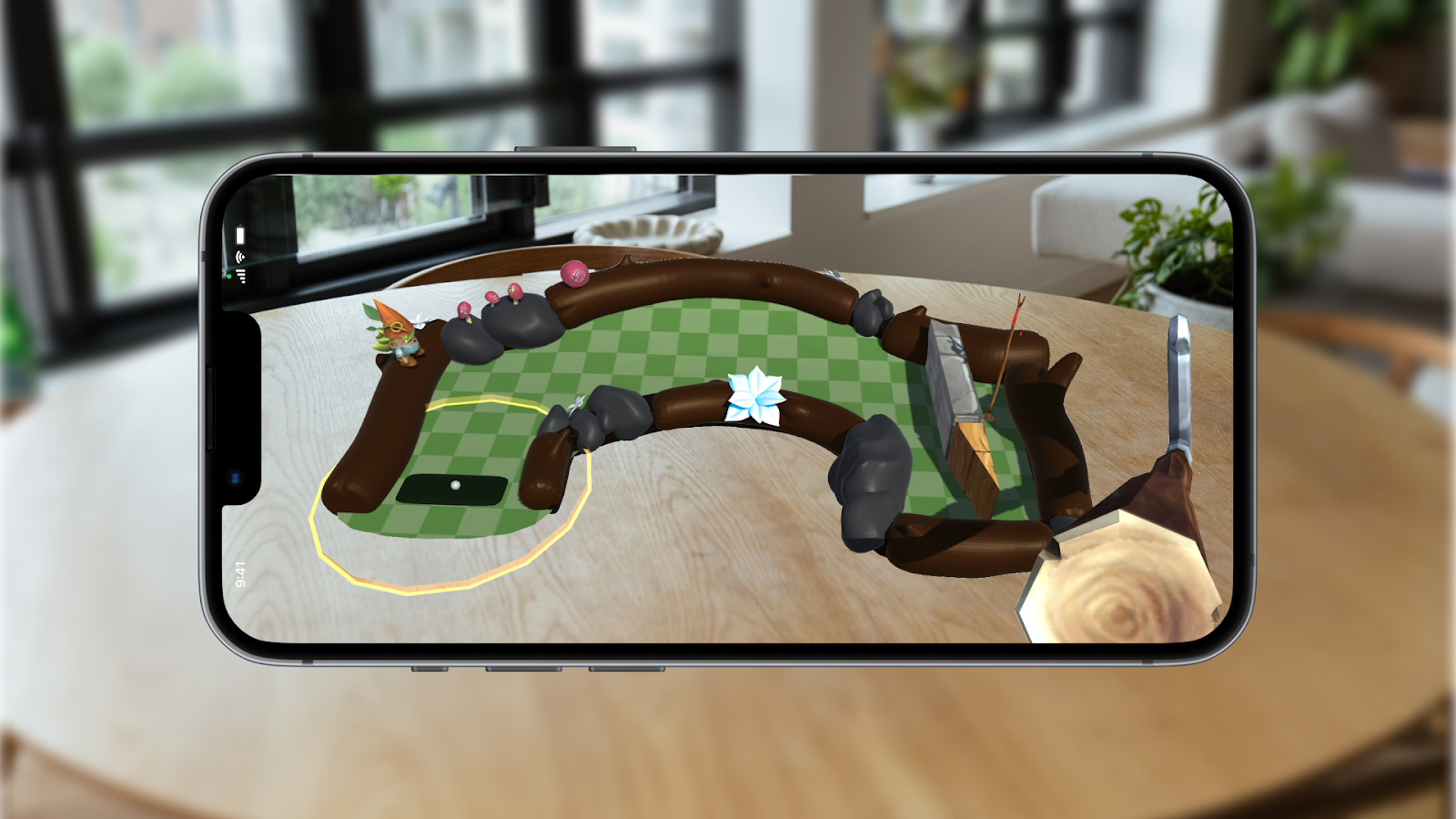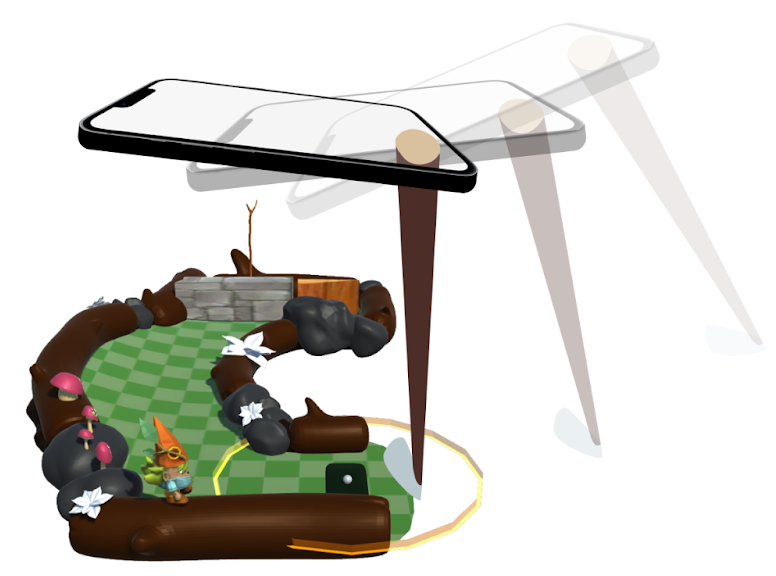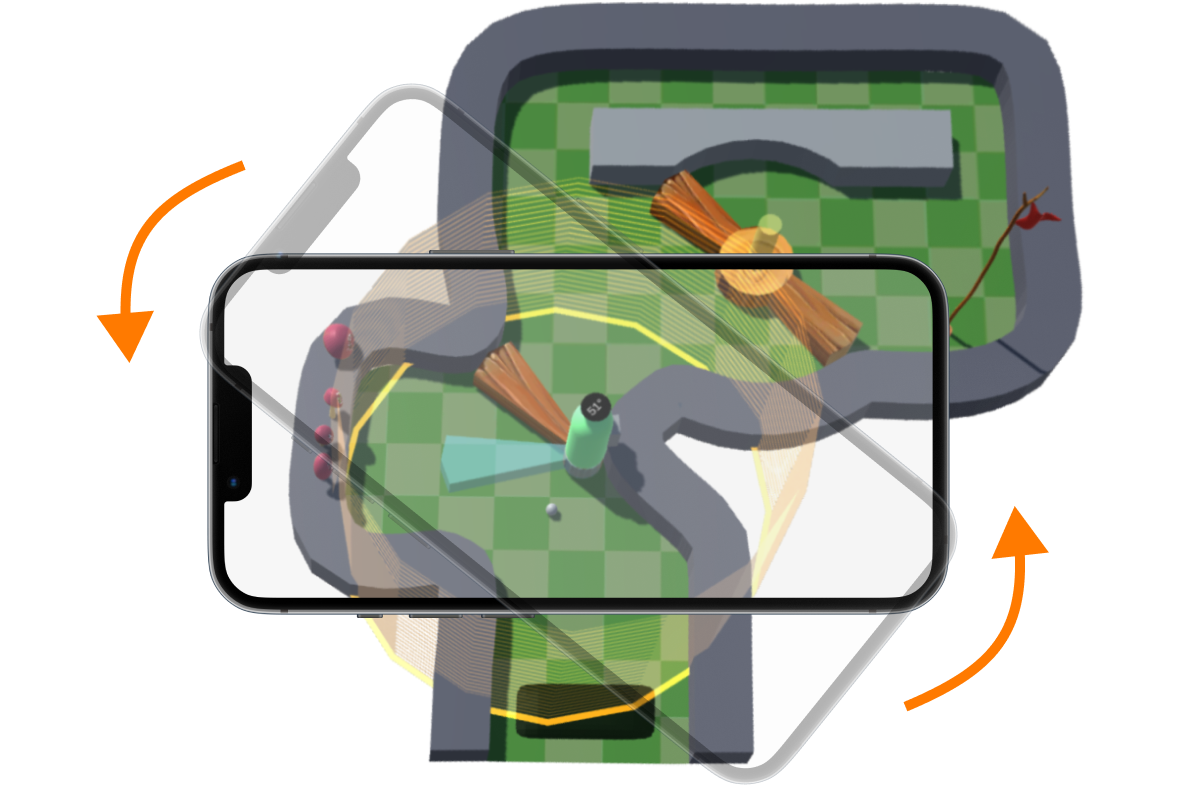Gnome Gnolf

Overview
Gnome Gnolf is a game I worked on with The MIT Scheller Teacher Education Program and The Education Arcade. This game is part of a study researching how to effectively design an augmented reality (AR) game to provide an introduction to a subject and increase players’ positive affect towards it. In particular, Gnome Gnolf seeks to do this with geometry by building a game around rigid transformations (translation, rotation, and reflection) to be played on a phone. This study is still ongoing as of the writing of this post. Over the course of the game, the player must use their putter and the gnomes together to navigate a minigolf-style course.
My Role
I worked in several roles over the course of this project. Over summer 2021, I worked on the design team, fleshing out the core mechanics of the game and designing several of the holes of the gnolf course; the design team also received weekly builds from the programming team, and we tested them to make sure they matched our designs and find bugs. I took a break from the project for the following school year, and the programming team did a bit more work that winter. I rejoined the project for summer 2022, staying on through the end of development at the end of summer 2024; at this point, I was the only programmer, and the rest of the old design team was now working on fleshing out how the study would test with students and getting approval for doing so. I produced weekly builds to send to them, and they would test out the new features I had added, followed by all of us discussing whether the new features gave the experience we were expecting them to and deciding what I would work towards for the next week.
Mechanics
The core mechanics of Gnome Gnolf are putting the ball and completing rigid transformations.


